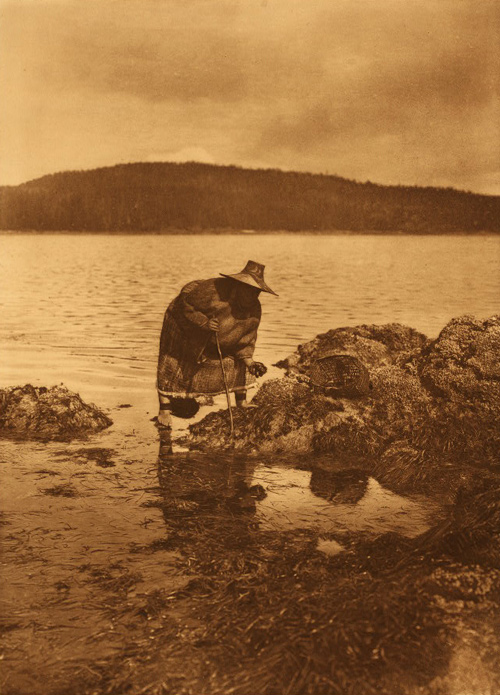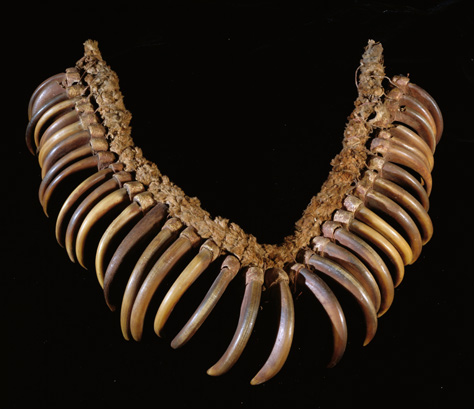Fort Clatsop, Astoria, OR The captains describe Chinookan lifeways detailing their manner of dress, decoration, and how they flatten their foreheads.
Gathering Abalones – Nakoaktok
Edward S. Curtis (1868–1952)
Northwestern University Library, Edward S. Curtis’s “The North American Indian,” 2003.[1]Edward S. Curtis, The North American Indian (1907-1930) v.10, The Kwakiutl. ([Cambridge: The University Press], 1915), plate no. 342.
Coboway’s Certificate
we gave Comowooll alias Connia [Coboway], a cirtificate of his good conduct and the friendly intercourse which he has maintained with us during our residence at this place; we also gave him a list of our names.—
—Meriwether Lewis
Chinookan Lifeways
The Killamucks [Tillamooks], Clatsops, Chinnooks [Chinooks], Cathlahmahs [Kathlamets] and Wâc’-ki-a-cums [Wahkiakums] resemble each other as well in their persons and dress as in their habits and manners . . . . the most remarkable trait in their physiognomy is the peculiar flatness and width of the forehead which they artificially obtain by compressing the head between two boards while in a state of infancy and from which it never afterwards perfectly recovers.
—Meriwether Lewis
Local Rain Gear
a mat is sometimes temperarily thrown over the sholders to protect them from rain . . . . they also cover their heads from the rain sometimes with a common water cup or basket made of the cedar bark and beargrass.
—Meriwether Lewis
Wampum
They [Chinookan Indians] are also fond of a species of wampum which is furnished them by a trader whom they call Swipton. it seems to be the native form of the shell without any preperation.
—Meriwether Lewis
Blue Beads
The favorite ornament of both sexes are the common coarse blue and white beads which the men wear tightly wound arond their wrists and ankles many times untill they obtain the width of three or more inches. they also wear them in large rolls loosely arond the neck
—Meriwether Lewis
Collars of Bear Claws
the men sometimes wear collars of bears claws, and the women and children the tusks of the Elk variously arranged on their necks arms &c. both males and females wear braslets on their wrists of copper brass or Iron in various forms.
—Meriwether Lewis
Weather Diary
Aspect of the weather at Rise
Wind at rise
Aspect of weather at 4 O’Ck P. M. Wind at 4 OCk. P. M. rain & hail after clouds, rain, & hail S W. rain after fair, rain & hail S. W. frequent and suddon changes during the day wind not so hard as usual.
—Meriwether Lewis[2]To assist the reader, the editor of this web page has omitted the “Day of the Month” column and spelled out some abbreviations.
Fort Clatsop is a High Potential Historic Site along the Lewis and Clark National Historic Trail managed by the U.S. National Park Service. The site is managed by the Lewis and Clark National and State Historic Parks.




